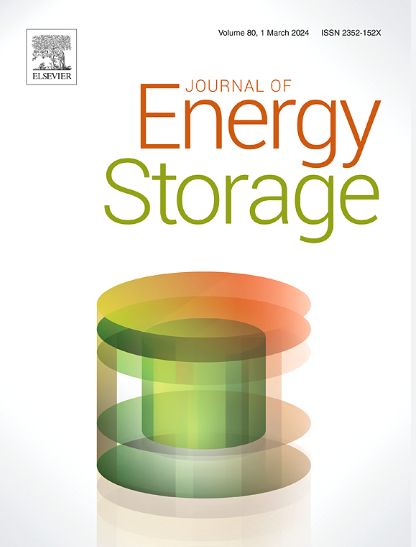电池制造的趋势和新兴方向:综合文献计量学分析
IF 8.9
2区 工程技术
Q1 ENERGY & FUELS
引用次数: 0
摘要
关于电池制造的广泛文献使得在没有先进分析技术的情况下确定最新趋势和研究重点具有挑战性。文献计量分析利用作者关键字、标题和摘要的文本挖掘,提供了处理大量数据的系统方法。在本研究中,使用词云、共现网络和趋势分析等技术对过去十年的电池制造研究进行了检查。研究结果表明,新加坡、澳大利亚和美国在研究影响力方面处于领先地位,这反映在更高的平均引用数上。文献主要集中在电池制造,特别是锂离子电池。然而,近年来,诸如锂金属电池、固态电池、锌离子电池和锌金属电池等新兴技术引起了人们的关注。在组件中,阳极是研究最多的,特别是锂离子和钠离子电池,重点关注石墨烯和碳等材料。无阳极电池被认为是一种新兴趋势,而固态电池的研究则强调固体电解质间相(SEI)稳定性的界面工程和锆酸锂(LLZO)电解质的使用。性能改进仍然是主要主题,包括热管理和电池管理系统(BMS)的创新。近年来,人们对智能制造和可持续发展主题的兴趣也越来越大,包括生命周期评估(LCA)、二次生命应用、拆卸和回收。标签制造研究突出了多层焊接和拉伸剪切载荷评估的进展,以提高机械强度和质量。本文章由计算机程序翻译,如有差异,请以英文原文为准。
Trends and emerging directions in battery manufacturing: A comprehensive bibliometric analysis
The expansive literature on battery manufacturing makes it challenging to identify recent trends and research priorities without advanced analytical techniques. Bibliometric analysis, leveraging text mining of author keywords, titles, and abstracts, provides a systematic approach to processing vast amounts of data. In this study, battery manufacturing research from the last decade was examined using techniques such as word clouds, co-occurrence networks, and trend analysis. The findings indicate that Singapore, Australia, and the USA lead in research impact, as reflected by higher average citation counts. The literature predominantly focuses on cell manufacturing, particularly for lithium-ion batteries. However, emerging technologies such as lithium-metal, solid-state, aqueous zinc-ion, and zinc-metal batteries have gained attention in recent years. Among components, anodes were the most studied, especially for lithium-ion and sodium-ion batteries, with significant focus on materials like graphene and carbon. Anode-free batteries are identified as an emerging trend, while solid-state battery research emphasizes interface engineering for solid electrolyte interphase (SEI) stability and the use of lithium lanthanum zirconate (LLZO) electrolytes. Performance improvement remains the dominant theme, encompassing innovations in thermal management and battery management systems (BMS). Recent years have also seen growing interest in smart manufacturing and sustainability topics, including life cycle assessment (LCA), second-life applications, disassembly, and recycling. Tab manufacturing research highlights advancements in multi-layer welding and tensile shear load assessment to improve mechanical strength and quality.
求助全文
通过发布文献求助,成功后即可免费获取论文全文。
去求助
来源期刊

Journal of energy storage
Energy-Renewable Energy, Sustainability and the Environment
CiteScore
11.80
自引率
24.50%
发文量
2262
审稿时长
69 days
期刊介绍:
Journal of energy storage focusses on all aspects of energy storage, in particular systems integration, electric grid integration, modelling and analysis, novel energy storage technologies, sizing and management strategies, business models for operation of storage systems and energy storage developments worldwide.
 求助内容:
求助内容: 应助结果提醒方式:
应助结果提醒方式:


